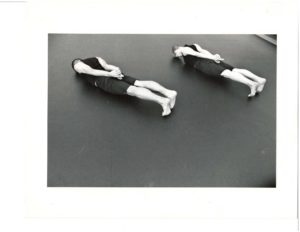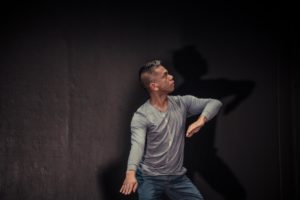Have you ever looked at those lists that match up gift ideas with specific anniversaries? For every year from one to twenty-four and then every five years from twenty-five to ninety, there are traditional and modern suggestions for what you might present to your significant other. To celebrate three years, the traditional choice is leather, while the modern is crystal; year twenty-four’s recommendations are opal (traditional) or musical instruments (modern). Sometimes the two opinions converge, like with rubies for a fortieth anniversary, or emeralds to mark fifty-five.
What about year twenty? To commemorate two decades, the traditionalists opt for china, and the modernists, platinum. I find this pair particularly striking: china, with its uniqueness and fragility; platinum, with its robust durability and resilience. Sure sounds like the distillation of any twenty-year relationship. Something that is distinctive, that takes strength and perseverance to maintain, that has seasons of vulnerability. And of course, it is rare. Surviving and thriving for twenty years is getting less and less common everyday.

For San Francisco/Bay Area contemporary dance companies, weathering every year seems cause for celebration, especially amidst this region’s stark financial realities. So to make it to twenty years? Wow. GERALDCASELDANCE is excited and thrilled to be marking this significant milestone in 2018. They are commemorating the occasion by looking back at and reflecting on the company’s twenty-year history. By premiering an evening of new work at ODC Theater in June. And by celebrating GERALDCASELDANCE’s commitment to ask penetrating questions about society and the human condition through collaborative contemporary performance.
It was the late 1990s when GERALDCASELDANCE first surfaced on the contemporary dance landscape, founded by dancer, teacher and choreographer Gerald Casel. After seven years performing with Stephen Petronio’s company, Casel was anxious to explore new artistic avenues and he ventured down one of these paths in 1998. “My first choreography concert was in 1998 in New York City, at a studio called Context in the East Village,” Casel recounts, “they asked if I was currently choreographing and if so, they’d love to host an evening of my work.” As it turned out, Casel was making dances at that moment. He decided to go for it and presented a double bill: The Waltz Project for six women and There’s a Place For You Beneath My Pillow, a duet for himself and Chris Bergman, a fellow student he met while at Juilliard earning his BFA in dance. This program signaled the start of something new – the birth of GERALDCASELDANCE. “Back then, the trend was to call your company by your name and put dance at the end,” he says, “we’ve kept it that way because when applying for grants, the consistency matters; but there has always been a tension for me with the company’s name – every artist I work with is a co-creator; GERALDCASELDANCE has never been solely about me and my vision.”
Over the next ten years, Casel enjoyed a full and varied artistic journey. He returned to Stephen Petronio’s company in 2001, and remained there for an additional four years. He completed graduate school, earning an MFA from University of Wisconsin-Milwaukee in 2007, after which he began teaching full-time, first at NYU’s Tisch School of the Arts. All along the way, Casel and many collaborating artists, including composer Edward Ratliff, lighting designer Ben Stanton and costume designer Maile Okamura, continued creating new work that GERALDCASELDANCE debuted at a number of different venues. One particular highlight came in 2008, as the company marked the end of its first decade – Border, their first ever evening-length work, presented at the Joyce/Soho. For Casel, Border was a turning point, both structurally and conceptually. “I had never done an evening-length work before, and this one had eight dancers, live music (by Robert Poss), costume design and lighting design,” he explains, “and it was a response to the Bush administration’s desire to put surveillance along the border; it gave me such a visceral reaction, even in urban, diverse New York City, we still felt the repercussions of such actions.”
Eventually, Casel settled in the Bay Area, and joined the faculty at UC Santa Cruz where he is Associate Professor of Dance in the Theater Arts Department. GERALDCASELDANCE settled here too, and began introducing Northern Californian audiences to their work. While the company has performed throughout the Bay Area, they found a home base of sorts at ODC in 2015, when Casel was named an ODC Theater Resident Artist. During these past three years (the residency ends in 2018), Casel and the company have been developing a triptych of work that investigates racial politics. Part one, Splinters in Our Ankles, premiered in December 2015. “Splinters in Our Ankles takes its inspiration from Tinikling, a historic Philippine dance; it’s about cultural amnesia and omitted forgotten history,” Casel shares. The following year, GERALDCASELDANCE previewed the triptych’s second section, Cover Your Mouth When You Smile, a collaboration with artists Na-ye Kim and Peiling Kao. This work will have its official premiere in the company’s upcoming 2018 home season.

“Cover Your Mouth When You Smile explores racial melancholia and racial mimicry among Asian immigrants”, describes Casel, “when you are a naturalized immigrant, you assimilate a new culture and mimic that culture where you are now living; when you do that, you forego your original national/ethno-cultural identity and neuter your mother tongue.” Collaborating with Kim and Kao on this dance over the past year has been rewarding for Casel, a chance to delve into their three individual journeys and notice the places where the paths converge. “The three of us have similar experiences – born in Asia, growing up and training in predominantly white spaces – Na-ye is Korean and trained at The Royal Ballet before going onto to earn an MFA from NYU (Tisch) and PhD in Dance Education from Seoul National University; Peiling is from Taiwan and after training at Taiwan National University of the Arts, went on to receive her MFA from Mills College; and I [Casel] was born in the Philippines and trained at Juilliard,” he adds. Cover Your Mouth When You Smile may have moments of abstracted movement, but is not an abstract work. It’s a collage of personal stories, one that the trio hopes will confront assumptions and patterns of thinking. The notion of ‘upending’ is even finding its way into the project’s structure. Casel is taking the opportunity to challenge his own patterns of creation and composition, expanding his movement language and experimenting with theatrical devices like objects, text and song.
The third chapter in GERALDCASELDANCE’s current triptych will also make an appearance on the June program, a preview glimpse of Not About Race Dance. The in-progress ensemble composition considers two major contemporary works from 1994, Neil Greenberg’s Not About AIDS Dance and Bill T. Jones’ Still/Here, both of which premiered just a few years before GERALDCASELDANCE’s first concert. “The two shared vulnerable subject matter around disease, death and AIDS, but they had very different receptions; Arlene Croce’s infamous article [Discussing the Undiscussable, published in The New Yorker] characterized Jones’ work as exploitive victim art,” Casel recalls. With Not About Race Dance, GERALDCASELDANCE contemplates why this happened, and connects that line of inquiry to the present day. “We are examining how racial politics in contemporary dance and the predominance of whiteness in postmodernism underscored these events of decades past, and how today, there is still an urgent need to question the marked and unmarked power structures in dance and critique the normalized hierarchies,” states Casel.
 Like any in-progress endeavor, the company is unearthing more and more as they continue to dive in. One discovery is that other parts of the post-modern lineage also have connection to Not About Race Dance, works like Trisha Brown’s Locus Solo (1975). “When I learned Locus last year I felt that it didn’t fit or suit my brown body because in Locus, the ‘white’ body is literally and physically centered,” remembers Casel, “Not About Race Dance calls attention to this invisibility of whiteness in postmodernism.”
Like any in-progress endeavor, the company is unearthing more and more as they continue to dive in. One discovery is that other parts of the post-modern lineage also have connection to Not About Race Dance, works like Trisha Brown’s Locus Solo (1975). “When I learned Locus last year I felt that it didn’t fit or suit my brown body because in Locus, the ‘white’ body is literally and physically centered,” remembers Casel, “Not About Race Dance calls attention to this invisibility of whiteness in postmodernism.”
With the premiere of Not About Race Dance set for 2019, the next year or so is already planned out for GERALDCASELDANCE. As to what may be in store after that? Stay tuned. But whatever projects arise in the future, you can be sure that they will be driven by GERALDCASELDANCE’s longtime vision: to make art that asks critical and impactful questions.
This article appeared in the June 2018 edition of In Dance.

